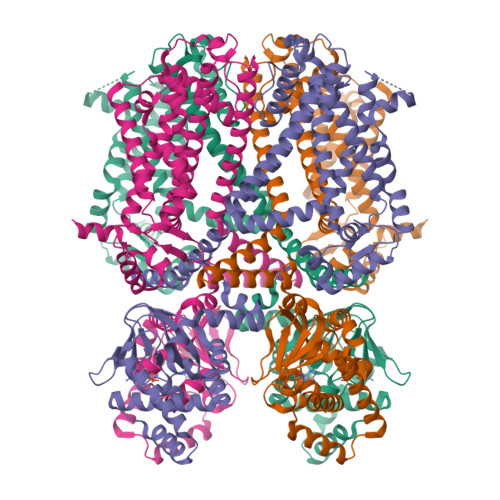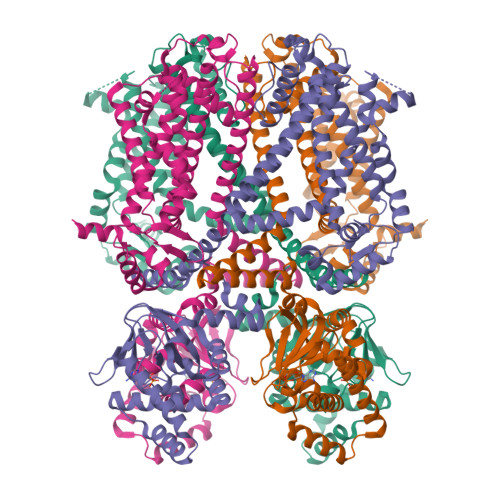Voltage Sensor Movements during Hyperpolarization in the HCN Channel.
Lee, C.H., MacKinnon, R.(2019) Cell 179: 1582
- PubMed: 31787376
- DOI: https://doi.org/10.1016/j.cell.2019.11.006
- Primary Citation of Related Structures:
6UQF, 6UQG - PubMed Abstract:
The hyperpolarization-activated cyclic nucleotide-gated (HCN) channel is a voltage-gated cation channel that mediates neuronal and cardiac pacemaker activity. The HCN channel exhibits reversed voltage dependence, meaning it closes with depolarization and opens with hyperpolarization. Different from Na + , Ca 2+ , and Kv1-Kv7 channels, the HCN channel does not have domain-swapped voltage sensors. We introduced a reversible, metal-mediated cross bridge into the voltage sensors to create the chemical equivalent of a hyperpolarized conformation and determined the structure using cryoelectron microscopy (cryo-EM). Unlike the depolarized HCN channel, the S4 helix is displaced toward the cytoplasm by two helical turns. Near the cytoplasm, the S4 helix breaks into two helices, one running parallel to the membrane surface, analogous to the S4-S5 linker of domain-swapped voltage-gated channels. These findings suggest a basis for allosteric communication between voltage sensors and the gate in this kind of channel. They also imply that voltage sensor movements are not the same in all voltage-gated channels.
Organizational Affiliation:
Laboratory of Molecular Neurobiology and Biophysics, Howard Hughes Medical Institute, The Rockefeller University, 1230 York Avenue, New York, NY 10065, USA.


















